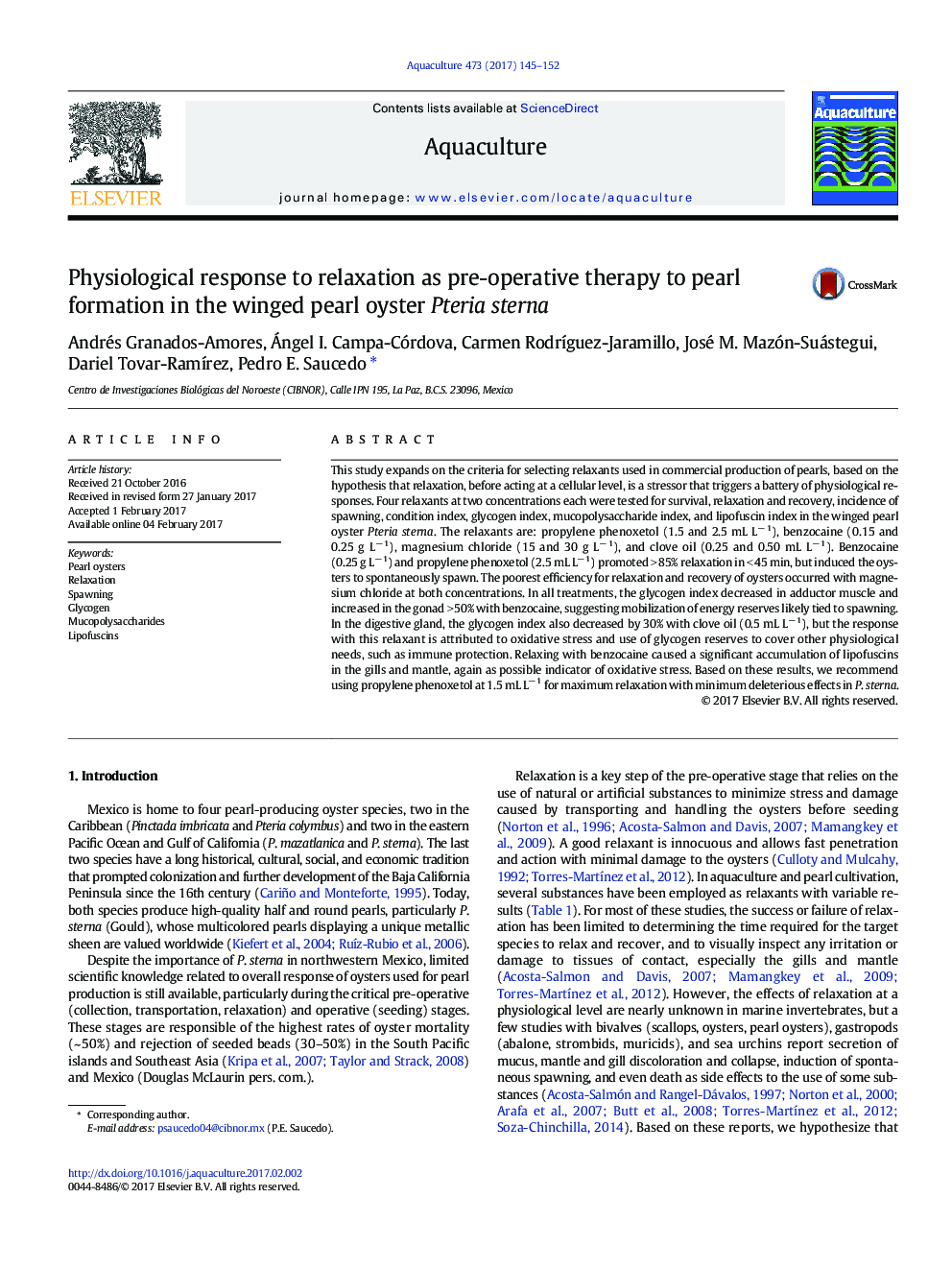| Article ID | Journal | Published Year | Pages | File Type |
|---|---|---|---|---|
| 5539071 | Aquaculture | 2017 | 8 Pages |
Abstract
This study expands on the criteria for selecting relaxants used in commercial production of pearls, based on the hypothesis that relaxation, before acting at a cellular level, is a stressor that triggers a battery of physiological responses. Four relaxants at two concentrations each were tested for survival, relaxation and recovery, incidence of spawning, condition index, glycogen index, mucopolysaccharide index, and lipofuscin index in the winged pearl oyster Pteria sterna. The relaxants are: propylene phenoxetol (1.5 and 2.5 mL Lâ 1), benzocaine (0.15 and 0.25 g Lâ 1), magnesium chloride (15 and 30 g Lâ 1), and clove oil (0.25 and 0.50 mL Lâ 1). Benzocaine (0.25 g Lâ 1) and propylene phenoxetol (2.5 mL Lâ 1) promoted > 85% relaxation in < 45 min, but induced the oysters to spontaneously spawn. The poorest efficiency for relaxation and recovery of oysters occurred with magnesium chloride at both concentrations. In all treatments, the glycogen index decreased in adductor muscle and increased in the gonad > 50% with benzocaine, suggesting mobilization of energy reserves likely tied to spawning. In the digestive gland, the glycogen index also decreased by 30% with clove oil (0.5 mL Lâ 1), but the response with this relaxant is attributed to oxidative stress and use of glycogen reserves to cover other physiological needs, such as immune protection. Relaxing with benzocaine caused a significant accumulation of lipofuscins in the gills and mantle, again as possible indicator of oxidative stress. Based on these results, we recommend using propylene phenoxetol at 1.5 mL Lâ 1 for maximum relaxation with minimum deleterious effects in P. sterna.
Related Topics
Life Sciences
Agricultural and Biological Sciences
Aquatic Science
Authors
Andrés Granados-Amores, Ángel I. Campa-Córdova, Carmen RodrÃguez-Jaramillo, José M. Mazón-Suástegui, Dariel Tovar-RamÃrez, Pedro E. Saucedo,
